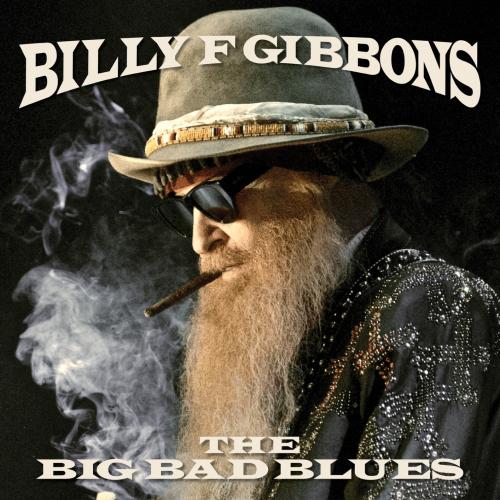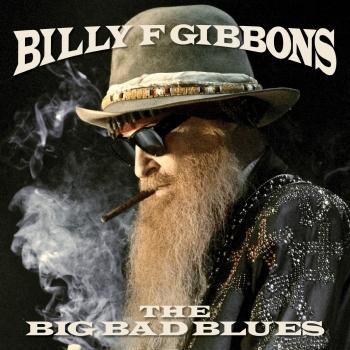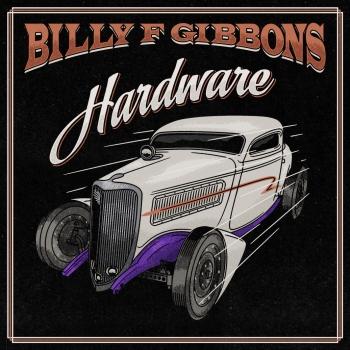
The Big Bad Blues Billy F Gibbons
Album Info
Album Veröffentlichung:
2018
HRA-Veröffentlichung:
21.09.2018
Das Album enthält Albumcover
Entschuldigen Sie bitte!
Sehr geehrter HIGHRESAUDIO Besucher,
leider kann das Album zurzeit aufgrund von Länder- und Lizenzbeschränkungen nicht gekauft werden oder uns liegt der offizielle Veröffentlichungstermin für Ihr Land noch nicht vor. Wir aktualisieren unsere Veröffentlichungstermine ein- bis zweimal die Woche. Bitte schauen Sie ab und zu mal wieder rein.
Wir empfehlen Ihnen das Album auf Ihre Merkliste zu setzen.
Wir bedanken uns für Ihr Verständnis und Ihre Geduld.
Ihr, HIGHRESAUDIO
- 1 Missin’ Yo’ Kissin’ 03:21
- 2 My Baby She Rocks 03:52
- 3 Second Line 03:42
- 4 Standing Around Crying 04:26
- 5 Let The Left Hand Know 03:53
- 6 Bring It To Jerome 04:34
- 7 That’s What She Said 03:16
- 8 Mo’ Slower Blues 04:00
- 9 Hollywood 151 03:24
- 10 Rollin’ And Tumblin’ 02:59
- 11 Crackin’ Up 02:46
Info zu The Big Bad Blues
Wer mit dem Namen ZZ Top nichts anfangen kann, der sollte zumindest mit dem wahrscheinlich längsten Bart der Rockmusik vertraut sein: Das markanteste Markenzeichen des texanischen Trios, das im Übrigen den Rekord hält in Sachen „am längsten in der Urbesetzung zusammenspielend“, ist Billy Gibbons opulente Gesichtsbehaarung, die jedem Weihnachtsmann herbe Konkurrenz macht. Aber kommen wir nicht vom Thema ab.
Vielleicht ist es ja genau diese Treue zur Originalbesetzung, warum Gibbons sein Solo-Debut erst mit 66 Jahren in den Orbit entließ. Mit Perfectamundo ging Billy Gibbons 2015 auf musikalische Expedition, tauschte Whiskeyglas gegen Entdeckerhut und machte einen gewieften Abstecher in musikalisches Neuland. Afro-kubanische Einflüsse sorgten für erstauntes Aufsehen, hochtrabendes Lob und so manche Kritik.
Nun ist er zurück auf Solopfaden und – um bei dieser Metapher zu bleiben – kehrt von seinem Trip in exotische Genres wieder nach Hause zurück. Zum Blues. Aber nicht nur irgendeinem Blues: Am 21. September veröffentlicht Billy Gibbons The Big Bad Blues, das ab sofort vorbestellt werden kann!
Programmatisch ist mit dem Titel schon viel gesagt. In sechs brandneuen Kompositionen und fünf Coversongs konzentriert sich Gibbons auf seine legendäre Stimme und Gitarrenlicks, die er aus den tiefsten Tiefen des Blues hervorgeholt hat.
Dabei verlief schon das Meeting zwischen Gibbons und John Burk, seines Zeichens Chef von Concord Records, in Back-to-the-Roots-Manier: Anstatt sich im schicken Büro in Beverly Hills über die neue Platte auszutauschen, verabredeten sich Gibbons und Burk in einer Tiefgarage in Hollywood, um sich in Burks Cabrio die ersten Songs mal in voller Lautstärke reinziehen zu können. Die Akustik der Betonwände um sie herum tat ihr Übriges und Burk war sofort hin und weg. Kein Wunder, Gibbons hatte sich für Tracks wie Rollin’ and Tumblin’, Missin’ Yo’ Kissin’ und Crackin’ Up die Crème de la Crème seiner Musiker-Gang ins Studio bestellt. Hammondorgel-Guru Mike „The Drifter“ Flanigin arbeitete neben ZZ Top schon mit Kat Edmonson und Jimmy Vaughn und unterfüttert The Big Bad Blues mit einem Tastenspiel, das jedem Texas Fan das Herz aufblühen lässt.
Während sich Austin Hanks als Halbgott an der Linkshänder-Gitarre erweist, ist Gibbons zusammen mit James Harman für die Mundharmonika verantwortlich.
Bassist Joe Hardy und Velvet Revolver Drummer Matt Sorum machen derweil in der Rhythmus-Sektion ordentlich Druck, um aus The Big Bad Blues ein – so Gibbons – „wahres Street-Album“ zu machen, das einen so schnell nicht loslässt.
Billy Gibbons
Along with the late Stevie Ray Vaughan, ZZ Top guitarist Billy Gibbons is unquestionably one of the finest blues-rock guitarists to ever emerge from Texas. Born on either March 4 or December 16, 1950 (both dates have been given in the past), and raised in Houston, Texas, Gibbons grew up in a home that favored both classical and country sounds, but upon discovering Elvis Presley via an appearance on The Ed Sullivan Show, Gibbons became transfixed by rock & roll. It wasn’t long before he discovered other early rock & rollers (Little Richard) as well as bluesmen (Jimmy Reed) via a local radio station. Soon after receiving a Gibson Melody Maker electric guitar and a Fender Champ amp for Christmas in 1963, Gibbons began emulating his heroes — forming his first band when he was 14 (the Saints). The guitarist later joined a group around the mid-’60s called the Coachmen, who specialized in more psychedelic-based sounds, inspired by the likes of Jefferson Airplane, Jimi Hendrix, and the local Texas outfit 13th Floor Elevators (led by a young Roky Erickson). Gibbons’ band eventually changed their name to the Moving Sidewalks, issuing a lone album in 1968, Flash, although an early single, “99th Floor,” would later receive attention when included years later on the Pebbles: Vol. 2 compilation. While the Moving Sidewalks never made a splash outside of Texas, Gibbons must have been pleased when Jimi Hendrix (with whom the Sidewalks toured with around this time) began endorsing the guitarist as one of his favorite new players to the media.
Rio Grande Mud When the Moving Sidewalks folded in 1969, Gibbons sought to form a more straight-ahead, boogie/blues-rock-based band, and after hooking up with a pair of other fellow Texans, bassist Dusty Hill and drummer Frank Beard, ZZ Top were born. The power trio slowly but steadily built up a solid following, largely due to Gibbons’ tasty guitar playing and muscular riffs (especially evidenced on such renowned tracks as “La Grange” and “Tush”). Over the course of five classic albums over a six-year span (1970’s self-titled debut, 1972’s Rio Grande Mud, 1973’s Tres Hombres, 1975’s Fandango, and 1976’s Tejas), ZZ Top became one of the country’s top rock bands before taking a three-year break. When they returned, the musical climate had changed considerably, and ZZ Top opted to change with the times — as a more modern, electronic sound was merged with their blues-rock roots on such albums as 1979’s Deguello and 1981’s El Loco. But with the release of 1983’s Eliminator, the new approach came together for the group, while both Gibbons and Hill happened to come across a gimmick that will be forever associated with the group: long and stringy beards that grew down to their chests. It didn’t hurt that the group was responsible for some of MTV’s most popular video clips of all time (which always seemed to primarily focus on good-looking girls and a snazzy 1933 Ford three-door coupe, rather than the bandmembers), “Give Me All Your Loving,” “Sharp Dressed Man,” and “Legs.” Gibbons and Hill also became known for their assortment of matching and outlandish guitars, which were also always on display in their videos.
La Futura But the trio’s newly acquired commercial direction caused some consternation among longtime fans, and by the mid-’90s, new ZZ Top albums failed to sell as well as their earlier titles had, although a large and loyal following still flocked to their shows. Following 2003’s Mescalero, ZZ Top parted ways with RCA and it took them nearly a decade to deliver a new album: the Rick Rubin-produced La Futura appeared on American in 2012. Gibbons quickly followed that album with his first-ever solo project, the Cuban-inflected Perfectamundo, where he was supported by a group called the BFG’s. Perfectamundo appeared in November 2015.
A longtime vintage guitar collector, Gibbons owns some of the world’s most cherished and rare guitars, including a particular instrument that he’s become synonymous with, a 1959 Sunburst Les Paul Standard (which he dubbed “Pearly Gates”). In addition to music, Gibbons supposedly owns several automotive-related patents in his name, is an avid painter, and collects rare African art and artifacts, amassing so many that he was forced to store them in a warehouse in Houston. Besides recording with ZZ Top, Gibbons has been known to go by the alias Justis Walkert, appearing on recordings by Jeff Healey (Feel This) and the Rainer & Das Combo (The Texas Tapes). But it’s obviously Gibbons’ exceptional playing with ZZ Top that he’s best known for, as the guitarist has influenced a wide variety of players over the years, including the Meat Puppets’ Curt Kirkwood and Pantera’s Dimebag Darrell, to name just two.
Dieses Album enthält kein Booklet











